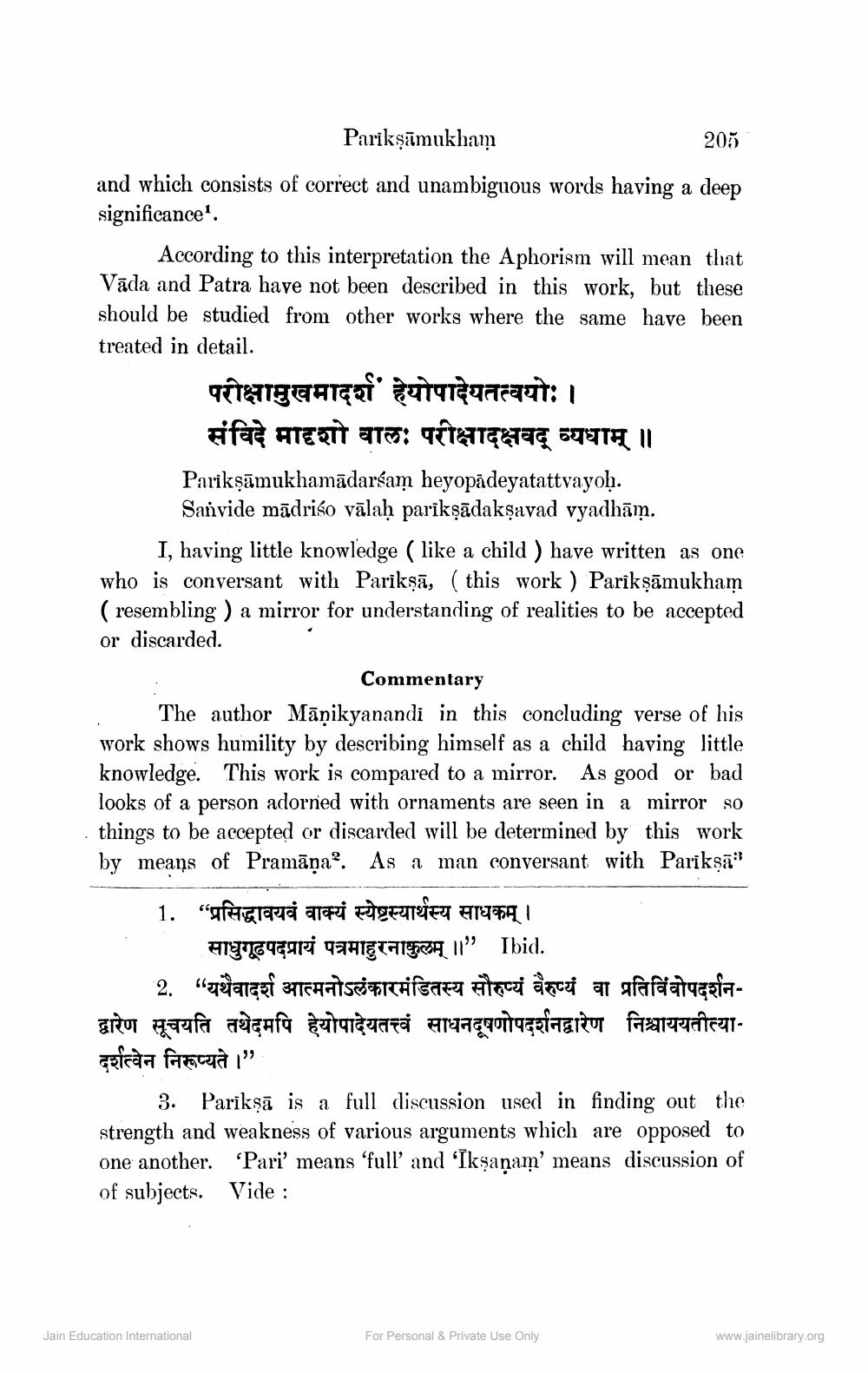________________
Parikṣāmukham
205
and which consists of correct and unambiguous words having a deep significance1.
According to this interpretation the Aphorism will mean that Vada and Patra have not been described in this work, but these should be studied from other works where the same have been treated in detail.
परीक्षामुखमादर्श' हेयोपादेयतत्वयोः ।
संविदे मादृशो वालः परीक्षादक्षवद् व्यधाम् ॥
Parikṣāmukhamādarśam heyopādeyatattvayoḥ. Sanvide madriso valaḥ parikṣādakṣavad vyadham.
I, having little knowledge (like a child) have written as one who is conversant with Parikṣā, (this work) Parikṣāmukham (resembling) a mirror for understanding of realities to be accepted or discarded.
Commentary
The author Manikyanandi in this concluding verse of his work shows humility by describing himself as a child having little knowledge. This work is compared to a mirror. As good or bad looks of a person adorned with ornaments are seen in a mirror so things to be accepted or discarded will be determined by this work by means of Pramāņa. As a man conversant with Parikṣa"
1. “प्रसिद्धावयवं वाक्यं स्येष्टस्यार्थस्य साधकम् ।
साधुगूढपदप्रायं पत्रमाहुरनाकुलम् ॥” Ibid.
2. " यथैवादर्श आत्मनोऽलंकारमंडितस्य सौरुष्यं वैरूप्यं वा प्रतिविंवोपदर्शनद्वारेण सूचयति तथेदमपि हेयोपादेयतत्त्वं साधनदूषणोपदर्शनद्वारेण निश्चाययतीत्यादर्शत्वेन निरूप्यते ।”
3. Parikṣā is a full discussion used in finding out the strength and weakness of various arguments which are opposed to one another. 'Pari' means 'full' and 'Ikṣaṇam' means discussion of of subjects. Vide :
Jain Education International
For Personal & Private Use Only
www.jainelibrary.org




